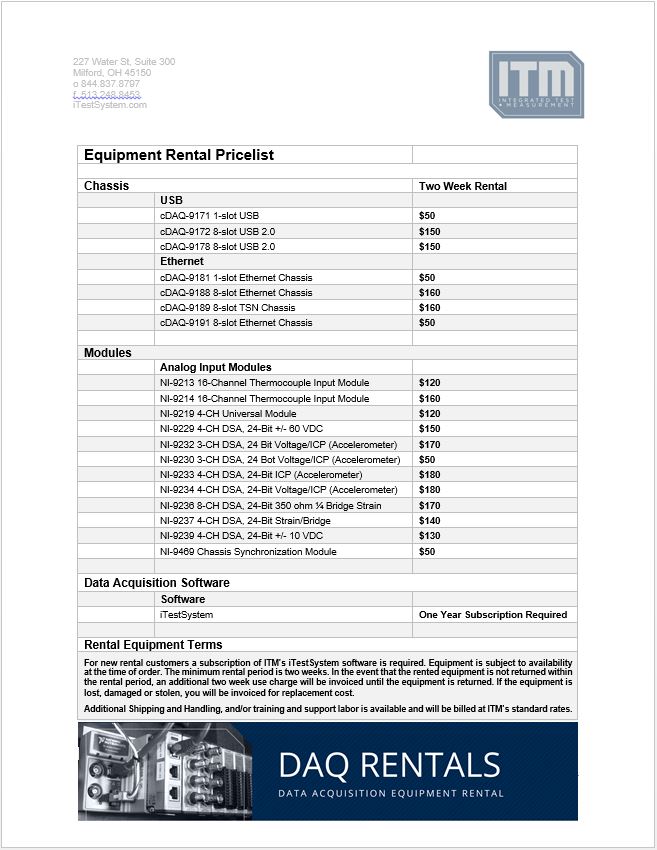DAQ FAQ: Everything You Need To Know About Data Acquisition Systems
So here's the deal, data acquisition systems—commonly referred to as DAQ—have become the backbone of modern data processing. Whether you're into engineering, science, or just plain tech-savvy, understanding DAQ is like having a golden ticket to unlock the secrets of how data gets collected and processed. Stick with me, and we'll break it down step by step so you can walk away feeling like a DAQ pro.
DAQ isn't just some fancy acronym; it's a system that bridges the gap between the real world and digital data. Think of it as the middleman that takes all the physical signals out there—like temperature, pressure, and vibration—and turns them into something your computer can understand. Cool, right? We’re diving deep into this, so grab your favorite beverage and let’s go.
Now, before we dive into the nitty-gritty, let's clear the air. If you've ever felt overwhelmed by technical jargon, don't worry. This guide is crafted to be as straightforward as possible. We're breaking down DAQ FAQ in a way that even your non-tech-savvy friends can grasp. Let's get started!
Read also:Apollo Sf The Ultimate Guide To Understanding Its Power And Potential
What Exactly is DAQ?
DAQ stands for Data Acquisition, but let's not stop there. It’s essentially a system that collects data from the physical world using sensors, converts it into digital form, and then sends it to a computer for processing. Imagine you're trying to measure the temperature of a room. You’d use a thermometer, right? In the DAQ world, that thermometer is a sensor, and the DAQ system converts that reading into something your computer can analyze.
DAQ systems come in all shapes and sizes, from tiny devices you can hold in your hand to massive setups used in industrial plants. They’re versatile, scalable, and can be customized to fit almost any need. The key takeaway? DAQ makes it possible to monitor and control processes in real-time, giving you the power to make data-driven decisions.
Why is DAQ Important?
Here's the thing—data is everywhere. From the vibrations of a machine to the humidity levels in a greenhouse, every physical parameter can be measured and analyzed. But without a DAQ system, all that data is just floating around, waiting to be captured. DAQ is the tool that brings order to chaos, transforming raw signals into actionable insights.
In industries like manufacturing, healthcare, and automotive, DAQ plays a crucial role. It helps optimize processes, improve efficiency, and ensure safety. For instance, in an automobile assembly line, DAQ systems monitor the performance of machines, alerting operators to potential issues before they become major problems. That’s some serious problem-solving right there!
How Does DAQ Work?
Alright, let’s break it down. A DAQ system typically consists of three main components: sensors, data acquisition hardware, and software. Sensors are the eyes and ears of the system, detecting physical parameters like temperature, pressure, or vibration. The hardware then converts these analog signals into digital data, which is sent to the software for analysis.
Think of it as a relay race. The sensors pass the baton to the hardware, which hands it off to the software. Each component plays a vital role in ensuring that the data is accurate, reliable, and easy to interpret. And just like in a relay race, timing is everything. A well-designed DAQ system ensures that data is captured and processed in real-time, giving you the most up-to-date information possible.
Read also:Erica Stottlemyre The Woman Who Left An Indelible Mark In The World
Key Components of a DAQ System
- Sensors: These are the devices that detect physical parameters. They’re the first step in the data acquisition process.
- Data Acquisition Hardware: This component converts analog signals into digital data. It’s the bridge between the physical world and the digital realm.
- Software: The software is where the magic happens. It takes the raw data and transforms it into meaningful insights, making it easy for users to interpret and act upon.
Common Applications of DAQ
DAQ systems are used in a wide range of industries, each with its own unique applications. In manufacturing, they’re used to monitor production lines, ensuring that everything runs smoothly. In healthcare, DAQ systems are used to monitor patients’ vital signs, providing doctors with real-time data to make informed decisions.
In the automotive industry, DAQ plays a crucial role in testing and developing new vehicles. From measuring engine performance to analyzing braking systems, DAQ systems provide the data needed to improve safety and efficiency. And let’s not forget about environmental monitoring, where DAQ systems track air quality, water levels, and other environmental factors to help protect our planet.
Industries That Rely on DAQ
- Manufacturing: Monitoring production lines and optimizing processes.
- Healthcare: Tracking patients’ vital signs and improving patient care.
- Automotive: Testing and developing new vehicles for improved safety and efficiency.
- Environmental Monitoring: Tracking air quality, water levels, and other environmental factors.
Types of DAQ Systems
Not all DAQ systems are created equal. There are several types, each designed for specific applications. Some are portable and easy to use, while others are more complex and require specialized knowledge to operate. Here’s a quick rundown of the most common types:
1. Portable DAQ Systems: These are compact and easy to carry, making them perfect for fieldwork. They’re often battery-powered and can be used in remote locations where traditional power sources aren’t available.
2. Rack-Mounted DAQ Systems: These are designed for industrial applications and are typically mounted in a rack for easy access and maintenance. They’re robust and can handle large volumes of data.
3. Modular DAQ Systems: These systems are highly customizable, allowing users to add or remove components as needed. They’re ideal for applications that require flexibility and scalability.
Choosing the Right DAQ System
Selecting the right DAQ system depends on several factors, including the application, budget, and technical requirements. Here are a few things to consider:
- Application: What are you trying to measure? Different applications require different types of sensors and hardware.
- Budget: How much are you willing to spend? DAQ systems can range from a few hundred dollars to tens of thousands, depending on the complexity and features.
- Technical Requirements: What kind of data do you need to collect? Make sure the system you choose can handle the volume and type of data you’re working with.
Benefits of Using DAQ
So, why should you care about DAQ? Here are a few reasons:
1. Real-Time Monitoring: DAQ systems provide real-time data, allowing you to make quick and informed decisions. Whether you’re monitoring a production line or tracking a patient’s vital signs, real-time data is crucial.
2. Improved Efficiency: By automating the data collection process, DAQ systems help reduce errors and save time. This leads to improved efficiency and better overall performance.
3. Enhanced Safety: In industries like manufacturing and automotive, DAQ systems help identify potential issues before they become serious problems, improving safety for both workers and consumers.
Challenges of Implementing DAQ
While DAQ systems offer numerous benefits, they’re not without their challenges. Here are a few things to keep in mind:
- Cost: High-end DAQ systems can be expensive, especially for small businesses or individuals.
- Complexity: Some systems require specialized knowledge to set up and operate, which can be a barrier for those without technical expertise.
- Maintenance: Like any technology, DAQ systems require regular maintenance to ensure they’re functioning properly. This can add to the overall cost and complexity.
Tips for Maximizing DAQ Performance
Now that you know the basics, here are a few tips to help you get the most out of your DAQ system:
1. Regular Calibration: Sensors and hardware can drift over time, so it’s important to calibrate them regularly to ensure accurate readings.
2. Software Updates: Keep your software up to date to take advantage of the latest features and improvements. This will also help ensure compatibility with new hardware and sensors.
3. Training: Make sure everyone who uses the system is properly trained. This will help reduce errors and ensure that the system is used to its full potential.
Common Mistakes to Avoid
Here are a few common mistakes to avoid when using a DAQ system:
- Ignoring Calibration: Failing to calibrate your system regularly can lead to inaccurate readings and unreliable data.
- Overloading the System: Trying to collect too much data at once can overwhelm the system, leading to errors and data loss.
- Skipping Maintenance: Neglecting regular maintenance can lead to system failures and costly repairs down the line.
Future Trends in DAQ
As technology continues to evolve, so does the world of DAQ. Here are a few trends to watch out for:
1. IoT Integration: The Internet of Things (IoT) is revolutionizing the way we collect and analyze data. DAQ systems are increasingly being integrated with IoT devices, allowing for even greater connectivity and data sharing.
2. Artificial Intelligence: AI is being used to enhance data analysis, making it easier to identify patterns and trends. This will lead to more accurate predictions and better decision-making.
3. Cloud-Based Solutions: More and more DAQ systems are moving to the cloud, allowing users to access data from anywhere and collaborate with others in real-time.
How These Trends Will Impact DAQ Users
These trends will have a significant impact on DAQ users, making systems more powerful, flexible, and user-friendly. By embracing these advancements, users can take their data acquisition capabilities to the next level, unlocking new possibilities and opportunities.
Conclusion
And there you have it, folks. DAQ FAQ in a nutshell. Whether you’re a seasoned pro or just starting out, understanding DAQ systems is essential in today’s data-driven world. From real-time monitoring to enhanced safety, the benefits of using a DAQ system are clear.
So, what’s next? If you’ve found this guide helpful, why not share it with your friends and colleagues? And if you have any questions or comments, drop them below. We’d love to hear from you. Remember, the world of DAQ is constantly evolving, so stay curious and keep learning!
Table of Contents:
- What Exactly is DAQ?
- Why is DAQ Important?
- How Does DAQ Work?
- Common Applications of DAQ
- Types of DAQ Systems
- Benefits of Using DAQ
- Tips for Maximizing DAQ Performance
- Future Trends in DAQ
- Conclusion



